Garden Chrysanthemum is a perennial plant from the Asian countries. Small-colorful varieties were brought to us from Korea, its second name of the long-term Korean chrysanthemum. Bright, lush bushes of many years of chrysanthemums are spectacularly highlighted against the background of other colors and plants in the garden, pleased with their buoy colorful bloom since the end of the summer before the start of frosts, is not a gift from the "queen of autumn". Colorful fragrant flowers are not terrible or cold winds or autumn rains, and they hold on the bushes for a long time. Autumn cloudy days, when other garden crops have already been blowing away and lost their attractiveness, luxurious bushes of many years of chrysanthemum continue to please us with a luxurious palette of paints and a variety of forms, giving a summer part and a bit of heat.
Chrysanthemum long-term, description
Huge popularity and love Among the flowerflowers, the bush perennial chrysanthemum deserved due to attractive appearance, decorativeness and ease of care. Perennial bush small-bedroom chrysanthemums grown in the open ground are called soil or Korean. Another popular name "Dubka" chrysanthemum received due to the form of leaves, similar to oak leaves. The height of the Korean Chrysanthemum bush can reach from 30 cm to 1.2 meters. The plant has a branched rhizome, giving root pig, the root goes into a depth of 25 cm. There is an incredible variety of varieties, species that differ in color, shape and flowering period of inflorescences.
Flower inflorescences - a basket consisting of a variety of separate floweries. The diameter of the inflorescence can be from 5 to 10 cm, and on one bush it can be accommodated up to 100 pieces. The amazing variety of flowers colored, their gentle pleasant aroma and the ability to save freshness for a long time after cut, attracts not only gardeners, but also florists who use chrysanthrom to compile bouquets and bright autumn compositions.
What attracts the long-term Korean chrysanthemum
- The plant is steadily for cold and frost.
- It has luxurious long blossoms.
- it has wonderful decorative qualities.
- After cutting, it retains freshness and attractiveness to 30 days, which allows it to be used to compile bouquets and flower compositions.
Chrysanthemum garden, perennial varieties
Chrysanthemum has more than 200 varieties that distinguish:
By infractions diameter:
- Large-flowered varieties (from 10 cm).
- Small-color varieties (up to 10 cm).
In the form of inflorescence:
Single and double-round varieties. In the center of the inflorescence there are flowers having a tubular shape, bordered by the tongue flowers. Flowers can be located in one or two rows.
Polish. Inflorescences, with many tongue flowers forming three or more rows in a basket.
Anemoneovoid. Inflorescences resembling a flower of anemona.
Pomponic. Inflorescence is an umbrella consisting of a variety of tongue flowers. Externally, the inflorescence resembles Pompon, from where and such a name.
Terry. Incredibly luxurious, lush inflorescences, formed from a variety of flowers of the tongue view.
In height and shape of the bush:
Curb. Little brown grade chrysanthemum. Close up to 30 cm bush, has an ideal shape of a ball that does not require additional adjustment. Used for decoration and design of borders, garden tracks and lawns.
The most famous varieties:
- Mascot. A bush with bright raspberry flowers, and sometimes beetricular. Bright stain on any plot.
- Evening lights. The name of the variety speaks for itself. Scarlet juicy flowers of this variety resemble a dazzling flakes of fireworks. Real holiday in the garden.
- Varvara. Gentle and calm inflorescences with a purple or lilac shade.
- Average. The average-eligible bush chrysanthemums reach a height from 30 to 50 cm. Have a rich palette of colors and shades. Successfully used in landscape design, for decoration and garden decoration, flower beds and flower compositions.
The most famous varieties:
- Lelia. A variety with dark raspberry inflorescences, very spectacular and bright in a group with bushs of different colors.
- Dune. Chrysanthemum changing his color from pale yellow to golden.
- Dawn. One of the most attractive terry varieties. His yellow-brown and even copper color create autumn a little sad mood in the garden.
Tall. Sorts of perennial chrysanthemums, reaching the height of up to 1 meta and above. Tall grades need reliable support, as they have fragile shoots. As a support, wooden stakes, frames or metal grids are used. Installing the backups is made when planting a bush. As you grow, shoots should be carefully tied up to the support. Luxurious high bushes are ideal for zoning the site.
The most famous varieties:
- Daughter Rosette. High chrysanthemum bush with pale pink flat inflorescences. Create a romantic and sensual atmosphere on the site.
Umku. Charming bush with pomponic snow-white flowers. Chrysanthemum perennial winter-hardy, resistant to cold, diseases and pests. - Amber Lady. Bright bush with golden inflorescences, a filling garden or a plot with an optimistic and festive mood.
Chrysanthemum perennial landing
Even a novice flower dealer can grow in his garden in his garden. It is worth remembering that the successful cultivation of the plant depends on the selected variety.
We choose a variety
Varieties with large inflorescences - more capricious and demanding in care. They are mainly grown in southern regions or orangene. For medium latitudes, small-bedroom Korean chrysanthemums are remarkably suitable, which are well transferring sharp decreases of temperatures.
We define a place to land
Chrysanthemums are light-minded plants that cannot grow and develop without sufficient light. The plot that you choose to plant the fall of the autumn must be well lit (at least 5 hours a day). The lack of sunlight leads to stretching of shoots and displacing the timing of its flowering. For landing chrysanthemum bushes, choose exalted well-lit sections.
Choosing soil
In addition, the perennial chrysanthemums do not tolerate the shaded areas, they are sufficiently poorly belong to excess soil moisturizing. Roots plants need sufficient ventilation, when the moisture delay in the roots, the plant may not transfer the wintering and die. Therefore, the soil for planting choose loose and breathable with neutral acid at the level of 5.5-6.5 pH
Choice of Time
Landing bushes chrysanthemum is carried out twice a year: in spring and autumn. But experienced flowers are recommended to spend it in the spring so that the plant is rooted in the soil and getting better at the site. The main landing period falls in the last few days or the beginning of the first summer month.
Landing chrysanthemum in open ground
In the event that the ground on the site is not rich in the body (for clay and sandy soils), for the previously support the soil on the site peat, manure or compost. (Per bucket of organics per square meter). It is very important not to overdo it with an organic fertilizer, otherwise Chrysanthemum will actively develop shoots and leaves, and there will be little colors.
For landing it is better to choose cloudy weather or before the time of day.
Stage of work:
- Dock the wells at a distance of 25 cm for low or medally dilapidated bushes. For large varieties, the distance must be up to 50 cm. Making a hole, focus on the rhizome bush. An exemplary diameter of the well - 30-40 cm.
- Pour the hole with a manganese solution (the solution must be saturated raspberry color). At the bottom of each well to put drainage with a height of 10 cm, which is suitable for river pure sand.
- Suck a cutlets with an earthen room in the well, carefully and shallowly blunting roots, as they are located horizontally. After landing, the plant needs a fertilizer to a rooting tool, for example, rhoin so that the bush is faster.
- In the first days after landing, the young plant should be stolen to protect it from harsh temperatures at night and direct sunlight during the day.
- For large varieties immediately make a support.
Reproduction
To multiply the bush chrysanthol in the following ways:
- cuttings;
- seeds;
- decision root;
- digging
Shining
The most convenient way of reproduction, which uses the boosted plants. To get a steel with a sharp knife, the escape under the leaf node is cut. Cuttings must have one or two interstices. Cut shoots are placed for further rooting in a container with a fertile fertilized soil and deepen by 2.5-3 cm. The cuttings must be regularly sprayed, watering until they are empty the first roots.
Seeds
A seed method of breeding is more suitable for small-ceiling Korean chrysanthemum, it provides early flowering variety and provides excellent germination. For sowing seeds prepare shallow boxes with fertile, loose and light soil. Landing time - mid-February. Seeds are distributed on the surface of the soil, slightly pressed the palm to the depth of no more than 1 cm. Sanding seeds must be covered with a film and put into a warm room (23-25 \u200b\u200bdegrees).
Periodically open the film for venting and spraying the soil. Shoots appear pretty quickly, after 7-10 days. Watering is carried out regular to maintain soil moisture, it is better from the sprayer. After the appearance of the few first leafs, the seedlings are peaked, dissolving them into separate containers by blowing down young sprouts to cups to the soil. After diving, the seedlings should be abundantly pouring and put in a darker and cool room for a couple of days.
Garden perennial chrysanthemums are remarkably transferring a transplant and grow root very quickly. To prepare young bushes for disembarking in open ground, they need hardening. Take out seedlings to the air, ranging from 15 minutes, and then with each day increasing their time staying on the street. By the end of May, seedlings can be planted.
Division bush
Modifying the bush of Chrysanthemum division of the bush is possible only when a plant of 3 years of age is reached. The division of the maternal bush is carried out in spring when young shoots appear on it.
Stage of work:
- A bush should be inked from all sides and carefully pull it together with an earthen room, trying not to harm the root.
- Earth must be bludge or washed off by a weak jet of water
- A sharp knife is used to separate the bush on the part. A part that cuts off should have a root and 3-4 escapes.
- The separated escape with the root must be treated in a weak solution of manganese.
- Then the seedlings are planted into the pre-prepared wells, the ground is pressed and water. In the first days, the bushes should be given to the branches, protecting them from the Sun.
The division of bush perennial chrysanthemums into several bushes contributes to the rejuvenation of the plant. Without transplanting plants aged 3-4 years are more susceptible to diseases and lose their decorativeness and attractiveness.
Reproduction by chains
Winter-hardy varieties of chrysanthemums can be multiplied by the method of touching young shoots. This method of reproduction is carried out in the fall. Around the bush need to dig the groove corresponding to the height and width of the cookistic. The stalks of chrysanthemum neatly stacked on the bottom of the ditches and pinned with a metal bracket. From above, the grooves are sprinkled with a layer of loose soil with a height of 15-20 cm and left for the winter. Already in the spring of the kidney formed, young shoots with a root root will appear. After the end of frosts, a rooted young plant should be digging and split the stems on the parts with the roots. Then land the chrysanthmore at a permanent place on the plot.

Formation of bush
To form a bush beautiful and correct shape, as well as abundant formation of flowers, the tops of the central buds need a piece. Also, the lateral shoots of the plant should also be searched. In chrysanthemums with major inflorescences, the purchase of a central escape is made after the appearance of 8 leaves on it. After the segmentation of the Escape gives lateral shoots that needed them to choose the largest and strong 2-3 escapes. The remaining side processes should be removed.
Small-flowered long-term Korean chrysanthemum is pumped after the appearance of 4-6 leaves on the shoots. After removing the top, the branches form new shoots, the clergy of which is made after they appear on them 8 or more leaves. Re-sequence contributes to the formation of a lush bush.
Perennial Chrysanthemum, Care
Care for many years of Korean Chrysanthemum is regular watering and timely feeding.
Watering
The bush chrysanthemium during the growing season must be abundantly poured up with soft water. And during the period of active flowering, it is necessary to water to cut, and carry out additional spraying of bushes in the morning and evening with warm water.
Feeding and making fertilizers
Perennial chrysanthemum can perfectly do without fertilizer, but in the completed fertilizer it needs. It can be prepared independently: 2 (sodium): 1 (phosphorus): 1 (potassium).
The first feeding is carried out after rooting the cuttings and the beginning of their growth, which is neatly entered under each bush. 14 days after the fertilizer is made, the plants are fed with a cowboy and bird litter. The second feeding should be carried out during the formation of buds. For it, phosphorous-potash fertilizers are suitable, affecting abundant flowering and increasing the resistance of chrysanthemum to the environment.
Temperature and lighting
The optimal and favorable temperature for growth and flowering chrysanthemum is about 15 degrees. To protect the plant from the heat, it should be water and sprayed. Perennial chrysanthemum prefers scattered and inadequate lighting in the morning and evening day. At noon, Chrysanthemum needs shelter.
Mulching
Perennial bush chrysanthemums need soil mulching. The procedure protects bushes from infection with fungal diseases and pests, as well as from education under the bushes of weeds. As a mulch, pine bark, needles or sawdust are used.
How to keep a multi-year chrysanthemistry?
Fighting pests and diseases
Despite its sustainability and immunity to many diseases and pests, perennial chrysanthemums are subject to such diseases:
Gray rot. There is a disease in the form of bright brownish spots on inflorescences. Over time, inflorescences are rotting. The disease develops from excessive soil moisture. The fight against the gray rot is to remove infected inflorescences and burning them. If the disease spread to the entire bush, it should be squeezed and burned.
Puffy dew. The disease is manifested by the appearance of white plants on the leaves and buds. To combat pulmonary dew, preparations "Topaz", "Champion" or processing with copper vitriol (for 10 liters of water 25 g plus 250 g of green soap).
Rust. The reason, due to which chrysanthemum leaves are covered with brown spots, and then yellow, is the appearance of rust. For prophylaxis, it is recommended to feed the bushes with phosphorus-potash feeders, and when it appears - to spray with fungicides.
Root bacterial cancer. The disease is not subject to treatment. Manifested by the appearance of protrusions on the root cervix of the plant. The infected plant should be digging and burned. The soil is disinfected by formalin.
Chrysanthemum is often susceptible to the attack of Tlya, meadow Claop, TRIPS and larvae of the May beetle. Insecticides are effectively fighting with them.
Colorful bright flowering of lush bushes chrysanthemum before the late autumn in the garden or the country area is capable of reviving and decorate a little sad autumn landscape. Chrysanthemums Garden perennial are perfectly combined with other garden flowers and shrubs and are beautiful in group landings, as decorating garden tracks and borders. Especially beautiful looks like the lowest varieties of many years of Korean chrysanthemum, forming a round-shaped bushes, covered with small colorful flowers. Lined along the garden tracks, they are adorable against the background of yellow and buggy foliage of the autumn garden.

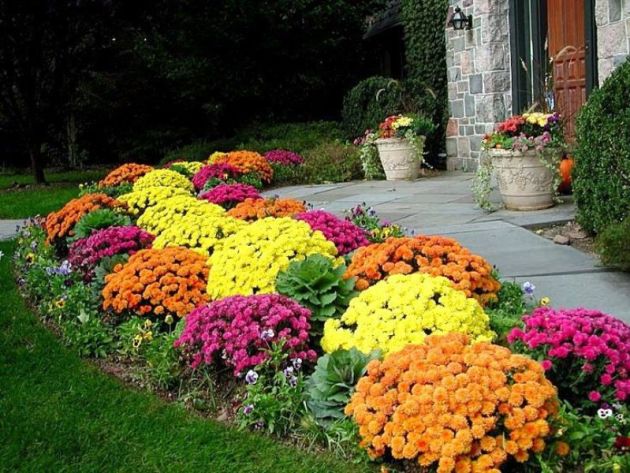
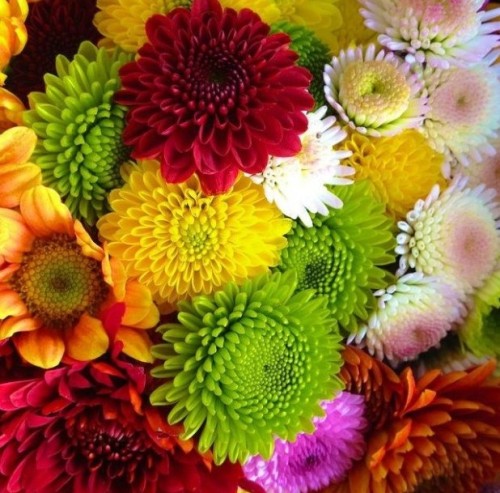
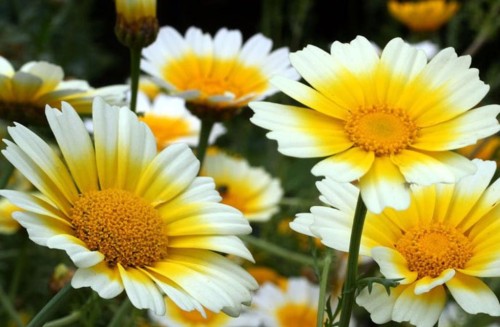
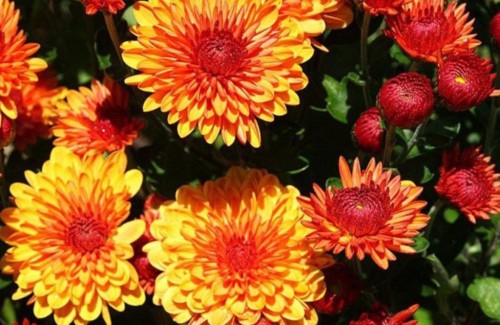
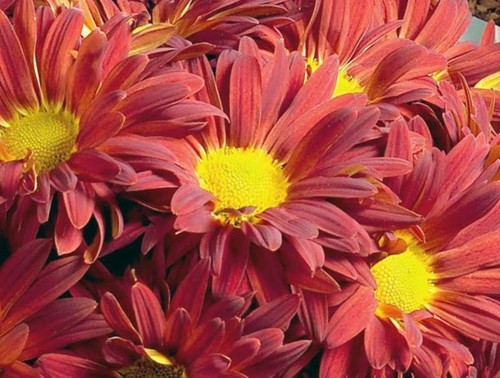
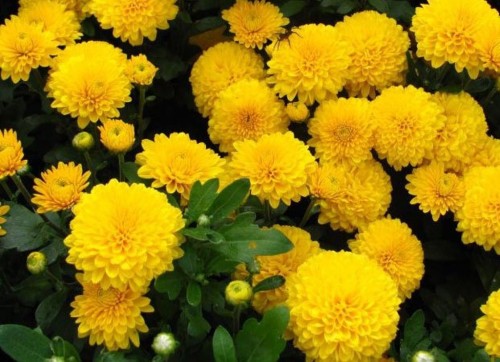
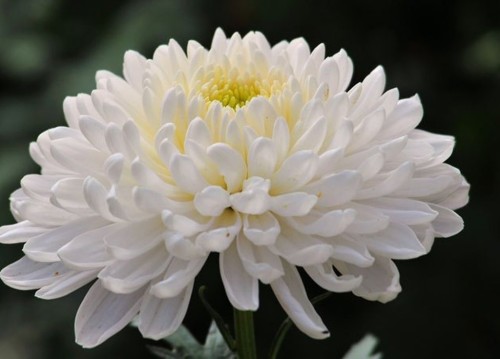
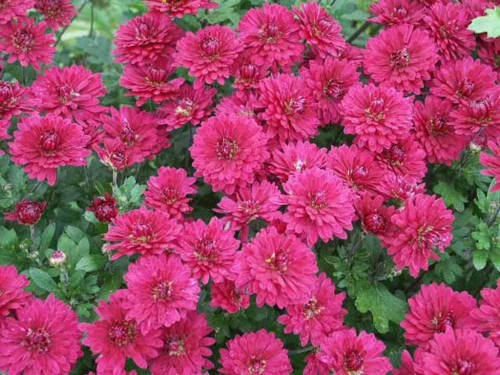
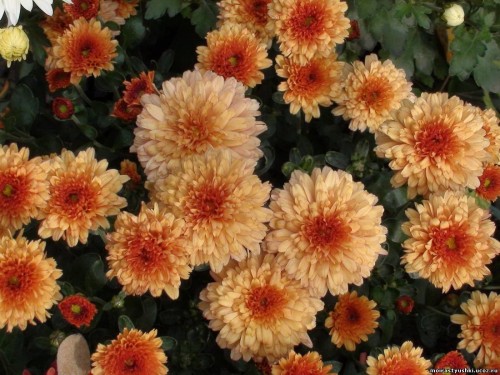
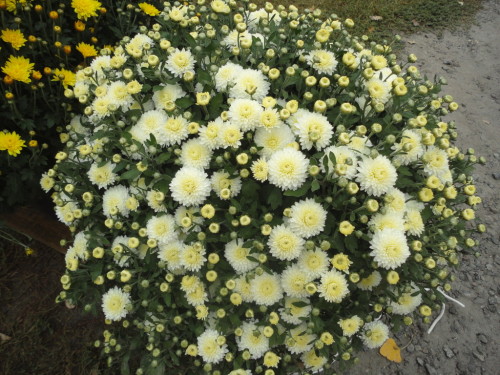
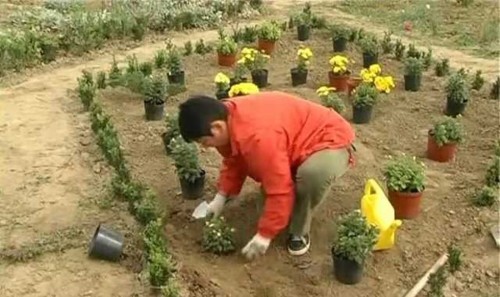
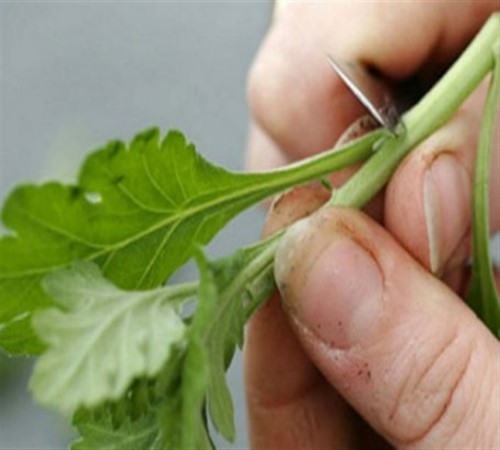
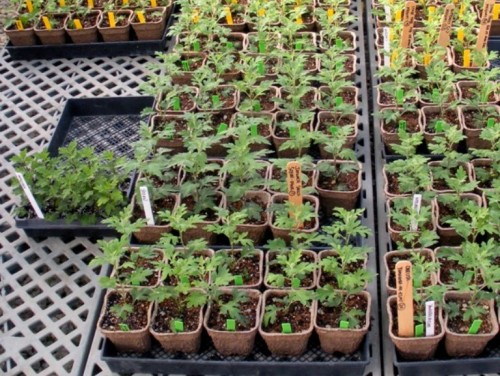
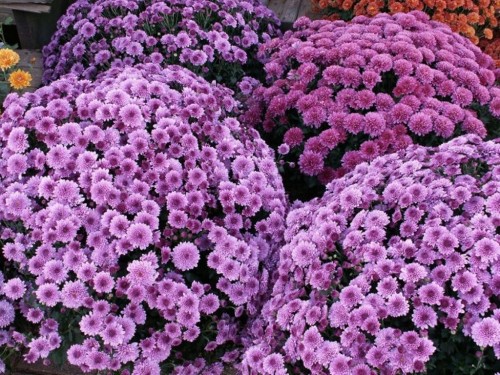
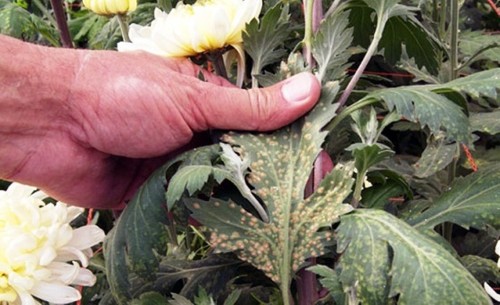
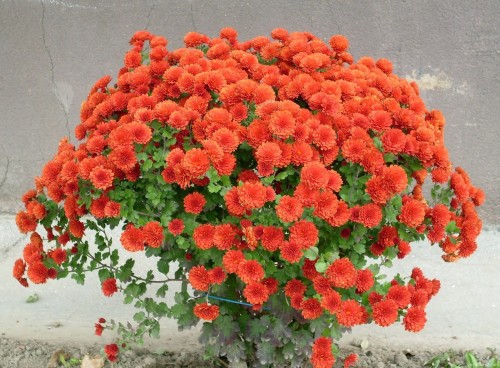
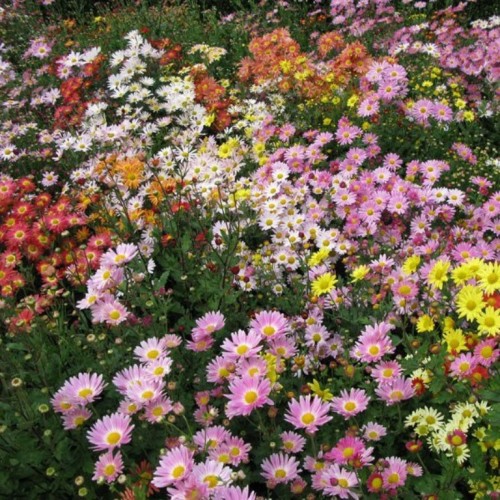
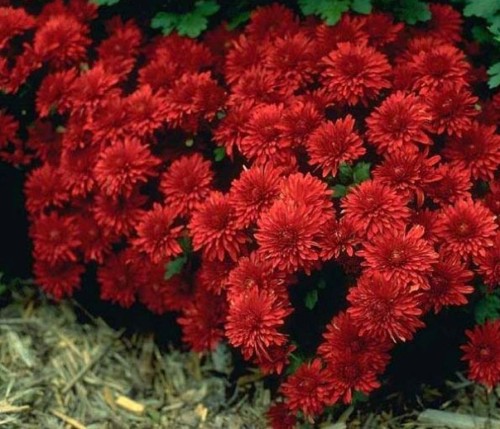
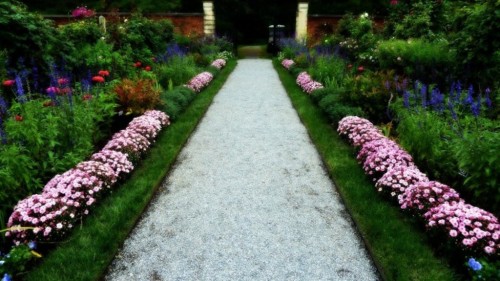
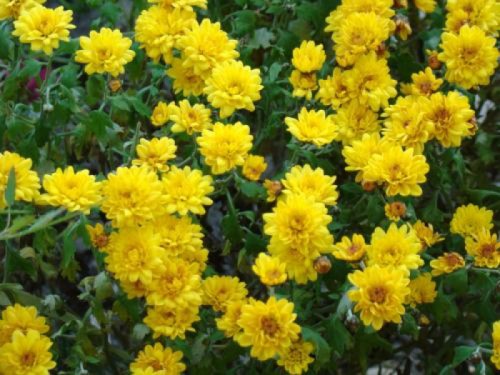
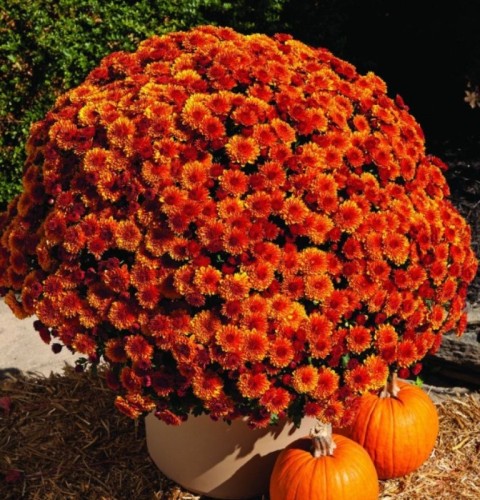
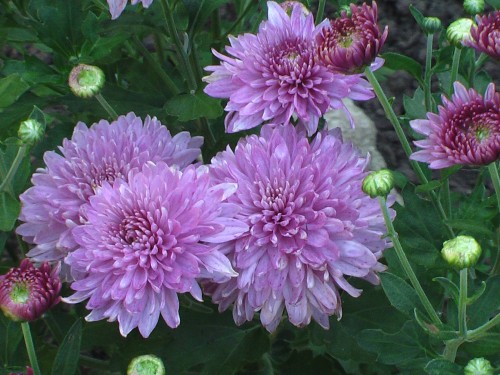





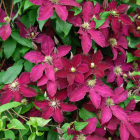
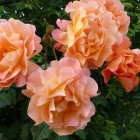

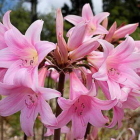
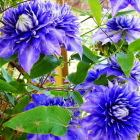
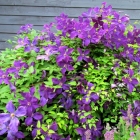
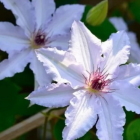
 Start a discussion ...
Start a discussion ...